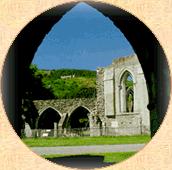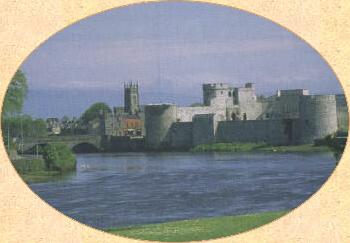
Murder
 In
1212 King John prepared a massive army to crush Llywelyn once
and for all. But the plan came to an abrupt halt. The king was
shaken by rumours of a plot inspired in France. His life would
be threatened by betrayal during the coming battle. In
a stunning political somersault, John wrong-footed his enemies
by yielding to the pope at last and surrendering England as a
fief to Rome.
In
1212 King John prepared a massive army to crush Llywelyn once
and for all. But the plan came to an abrupt halt. The king was
shaken by rumours of a plot inspired in France. His life would
be threatened by betrayal during the coming battle. In
a stunning political somersault, John wrong-footed his enemies
by yielding to the pope at last and surrendering England as a
fief to Rome.
Pope Innocent III was more
than pleased to accept John's subjection, along with large sums
of money. The papal interdict and John's excommunication
would be lifted. Now an attack on John would be an affront to
the pope himself. The exiled churchmen would return, including
bishop Giles de Braose, to absolve his sins. In reality,
of course, John's churchmen loathed the deal and their renewed
hatred sealed his reputation as England's most wicked king.
John
persistently denied the murder of prince Arthur. He calculated
that his new found papal protection would thwart the efforts
of Philip of France to bring him to trial. But Margam abbey recorded an ugly story for posterity
informed, perhaps, by their patron William de Braose:
After king John had captured
Arthur and kept him alive in prison for some time, at length
in the castle of Rouen after dinner on the Thursday before Easter
[April 3, 1203] when he was drunk and possessed by the Devil,
he slew him with his own hand, and tying a heavy stone to the
body cast it into the Seine. It was discovered by a fisherman
in his net, and being dragged to the bank and recognised, was
taken for secret burial . . .

The old legend that John
and his family were "the Devil's brood", literally
spawned by the Devil, had never seemed so true. Disenchanted
clerics also told another horror story.
Maud de Braose and her
son had been shut up in a dungeon with only a bacon and some
oat bread to sustain them. After eleven days the prison
cell was opened and both were found dead. William sat upright
on a chair, his face turned to the wall. The body of his
mother embraced her child. She seemed to have died kissing
his cheeks but closer inspection revealed that they had been
chewed away.
John
recognised that the de Braose stories were harmful to his cause.
He published his own version of William de Braose's fall,
to discredit the family for their rebellion. He had given
them every chance to settle with him for Munster and Limerick but their promises of payment
were never honoured. Therefore, "according to the
law and custom of England", William de Braose was outlawed.
(14.1)
Maud de Braose had clearly
maddened the king but the true cause of his fury and her ultimate
fate received no mention. The testimony was witnessed by
several barons, several of whom would later appear as leaders
of the rebellion against John in 1215.

back to text

back
to text
 Murder |
||||
Pope Innocent III was more than pleased to accept John's subjection, along with large sums of money. The papal interdict and John's excommunication would be lifted. Now an attack on John would be an affront to the pope himself. The exiled churchmen would return, including bishop Giles de Braose, to absolve his sins. In reality, of course, John's churchmen loathed the deal and their renewed hatred sealed his reputation as England's most wicked king. John persistently denied the murder of prince Arthur. He calculated that his new found papal protection would thwart the efforts of Philip of France to bring him to trial. But Margam abbey recorded an ugly story for posterity informed, perhaps, by their patron William de Braose:
 The old legend that John and his family were "the Devil's brood", literally spawned by the Devil, had never seemed so true. Disenchanted clerics also told another horror story. Maud de Braose and her son had been shut up in a dungeon with only a bacon and some oat bread to sustain them. After eleven days the prison cell was opened and both were found dead. William sat upright on a chair, his face turned to the wall. The body of his mother embraced her child. She seemed to have died kissing his cheeks but closer inspection revealed that they had been chewed away. John recognised that the de Braose stories were harmful to his cause. He published his own version of William de Braose's fall, to discredit the family for their rebellion. He had given them every chance to settle with him for Munster and Limerick but their promises of payment were never honoured. Therefore, "according to the law and custom of England", William de Braose was outlawed. (14.1) Maud de Braose had clearly
maddened the king but the true cause of his fury and her ultimate
fate received no mention. The testimony was witnessed by
several barons, several of whom would later appear as leaders
of the rebellion against John in 1215.
|
||||